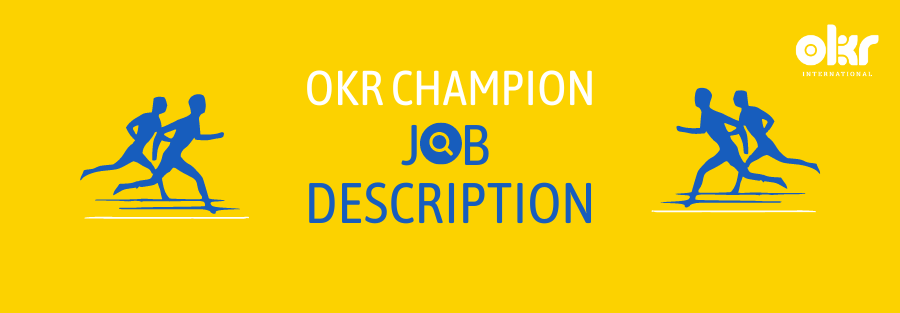Organisations are faced with the unique challenge of being amidst times when the pace of change has become exponential. Leaders are faced with the challenge of keeping teams aligned to ever-changing goal posts. Read on to learn OKRs Fundamentals and how leaders can leverage OKRs (or objectives and key results) to create alignment, Prioritisation, Accountability, Transparency and Empowerment in order to be truly agile.
Definition of OKR
Objective & Key Results is a goal setting and execution framework that focuses on no more than 3 to 5 Objectives (per cycle) and no more than 3 to 5 Key Results per objective. It’s a methodology that helps align the company strategy to its goals and people. OKRs ensure the whole organisation is focused on achieving the same goals.
Learn OKRs and OKR Fundamentals with our OKR-FC™! Click here.
Introduction to OKRs
OKRs are best suited as a goal setting & execution framework. It encourages no more that 3 to 5 Objectives and no more than 3 to 5 Key Results for every Objective. OKRs are being used irrespective of industry, function, or nature of teams. You can also use OKRs to achieve success in your personal life.
So, let’s be clear! OKR is an open-source framework. No two organisations tend to implement OKRs the same way. There are no rules, rather guidelines when working with OKRs. One must avoid being dogmatic about it. Due to its flexible nature, OKRs can be used in more ways than one. We have seen some companies set OKRs once a quarter, while others have chosen shorter frequencies.
In some cases, companies have altered the way its implemented. And yet some others have flexed the way they are reviewed. However, in order to maintain the integrity of the OKR framework, there are some essentials that must not be compromised.
Learn OKRs and OKR Fundamentals with our OKR-FC™! Click here.
History of OKRs
OKRs’ history is pegged way back to 1954 when Peter Drucker introduced MBO or Management by Objectives. In 1968, Andrew Grove co-founded Intel and later adapted the MBO to create the OKR framework as we know it today. In 1974, John Doerr joined Intel and learned OKR during his time there. When John Doerr became one of the first major investors and advisor in Google — he suggested the use of OKRs to Larry Page and Sergey Brin, who then implemented OKR at Google (which still uses it today). Over the years many companies globally have started using OKRs as their goal setting and execution framework. Some of the organisations that have used OKRs include names like Amazon, Netflix, Spotify, Atlassian, Microsoft, Facebook, Colgate, SWIFT, etc.
Learn OKRs and OKR Fundamentals with our OKR-FC™! Click here.
How OKRs drive exponential growth?
OKRs enable organisations to stay relevant, responsive and agile. They enable companies to achieve exponential growth through 6 super-powers.
More Focus on Priority: OKRs provide you with a solid framework to focus on what matters most – your priorities. This enables organisations to execute those priorities with nimble footedness and agility. Clearly, leadership readiness and buy-in continues to be the key to success. The ultimate goal of OKRs is to help companies and/or teams prioritise goals and make decisions on how to use various organisational resources – especially their people, time, and money – towards achieving those common goals.
Greater alignment of Goals and Efforts: OKRs and its very framework enhances systemic thinking. It encourages leaders to convert their strategy in annuals goals and then further break those goals into quarterly ones. In doing so, it becomes critical for teams and sub-teams to align themselves to the overall goals and purpose of the organisation. One also gets to see true alignment when there is a healthy amalgamation of top-down, bottom-up and cross alignment between teams or members. All working towards the same goals. The result? A well-oiled engine generating great value for the organisation.
Value Creation: OKRs, especially the Key Results, get defined in ways that help create more autonomy and empowerment. Well-crafted Key Results are outcome (value) based and not effort (activity) based. The right Key Results (outcome based) support the achievement of an Objective, thereby empowering employees, and teams to work out how best they should be achieving them.
More Interdependencies / Collaboration: Within its framework, OKRs require top-down, bottom-up and cross team alignment before implementation begins. This ensures everyone in the system is pooling in their resources toward those common big hairy audacious goals. And since OKRs are meant to be transparent, members also get to see real time changes in one place and how they affect other teams, thus allowing everyone to constantly align and re-align on a regular basis.
Rapid Innovation: OKR thus becomes the ‘go-to’ framework that ignites a truly agile system whilst acting as the conduit for cultural transformation within any team or organisation. Rapid experimentation of initiatives within the realm of OKRs, a ‘fail-fast’ mindset, psychological safety to take calculated risks, collaboration, learning and continual sprints in the product, services and operational segments all add up to creating an environment where innovation thrives.
Accountability & Ownership: By sheer virtue of its inherent design, OKRs are meant to create a culture of top-down and bottom-up communication. While the top-down design enables the strategic intent, the bottom-up approach brings grounded experience, executional intelligence, and clear contribution from people in teams. Through transparent alignment and involvement of employees across the board, higher levels of engagement and ownership is created.
Learn OKRs and OKR Fundamentals with our OKR-FC™! Click here.
What are Objectives?
In its simplest form, OKRs are a combination of Objectives, Key Results and its often-forgotten cousin, the Initiatives. So, let’s talk about Objectives first.
Objectives are the HEART of OKRs
Talking about Objectives, I often remember the story of Alice in Wonderland and my favorite part has always been where Alice comes upon a forked road as she chances upon the Cheshire cat on a tree. Alice: “Would you tell me, please, which way I ought to go from here?” The Cheshire Cat: “That depends a good deal on where you want to get to.” Alice: “I don’t much care where.” The Cheshire Cat: “Then it doesn’t much matter which way you go.”
Objectives should help answer the questions – Where do I want to go? What is my goal?
Objectives should give you a sense of direction and focus. When well crafted, it should inspire your people to work towards them. It brings ‘heart or emotionality’ to your endeavor. So where do you begin? Organisations with a clear purpose or a strong mission statement have better chances of creating compelling objectives. For example, Google’s mission statement – “to organize the world’s information and make it universally accessible and useful.” has a huge role to play in crafting their OKRs.
Objectives must not be created out of thin air, they need to be derived from your organisational strategy. If your strategy is to create new products within an existing market, your objective must be associated with it and ultimately yield that strategy. The Key Results and Initiatives will follow suit.
Here are some Guidelines for writing compelling objectives:
- Should be aligned to purpose and strategy.
- Make it exciting with an end-state.
- Should be ambitious.
- Objectives are more powerful when they are qualitative.
- Stick to 3-5 objectives, to maintain laser focus.
- Start with action verbs e.g., Create the most loved brand.
- Could be committed (shorter term) or aspirational (longer term).
Let’s take a look at 2 objectives:
Objective 1: Launch app for medical professionals.
Objective 2: Be the most user-friendly app for all medical professionals.
Which one would you choose as a well written objective? You guessed it right. It’s the second objective.
Objectives can be crafted at various levels within the organisation. Here are some common forms of objectives one can see:
- Annual Organisational Objectives
- Quarterly Organisational Objectives
- Departmental / Functional Objectives
- Project or Team Objectives
- Individual Objectives
Learn OKRs and OKR Fundamentals with our OKR-FC™! Click here.
What are Key Results?
If Objectives help answer the questions – Where do I want to go? What is my goal? Key Results help answer the questions – How will I measure success? How will I verify that I’ve reached my goal? Quite simply put, KRs are indicators of success.
Key results are nothing but measurable outcomes which, when achieved, will directly advance the objective.
So lets examine that makings of a compelling Key Result:
- Must be aligned to and contribute to an Objective.
- Must be quantitative (measurable and verifiable).
- Key Results must have a metric (KPI) and a target (quantity and timeline).
- These targets must be challenging.
- Stick to 3-5 Key Results per Objective.
Choosing the right KR is about being crystal clear on what you are trying to measure in the first place. Sometimes measures are not readily available. This is especially true when you are trying to measure intangibles or when baselines do not exist. We will cover more about how to deal with such KRs in the forthcoming module.
Key Result – Example
Let’s take an example to enhance our understanding of Key Results. John is the CEO of a tech-start up with a small team of 10 members. His organisation has just transitioned from its incubation stage and is ready to launch their product (an app for medical professionals). The team is based in England and they are aiming to capture the UK market. Their strategy is to penetrate the region and grow the user base in the first two years. Let’s take a looksee at what OKRs they ended up creating.
Objectives | Key Results |
Objective 1: Be the most user-friendly app for all medical professionals. (Customer Success) |
KR 1.1: Achieve a user Average Retention Rate of 80%
KR 1.2: Get an App Rating of 4.5 |
Objective 2: Win the UK market. (Growth) |
KR 2.1: Grow Market Share to 45% KR 2.2: Grow Daily Active Users (DAU) to 45K |
Note how various KRs fulfil the conditions under the guidelines of writing compelling KRs. In that, the Key Results enable achieving the Objective at hand, they seem to have a stretch, they are measurable and verifiable, and they all contain a metric (KPI) & a target (quantity & timeline).
Learn OKRs and OKR Fundamentals with our OKR-FC™! Click here.
What are Initiatives?
Initiatives play a crucial role in the execution of OKRs. Initiatives answer the question – What do I need to do in order achieve my Key Results? They work as the hands of your OKRs. They get things done!
Now let’s take a look at some Guidelines for Initiatives:
- Initiatives could be a project, task or activity.
- Have at least 1 initiative connected to every Key Result.
- Must be necessary to get the desired Key Result.
- Could be Boolean (Yes/No) or Metric driven. Training 20 members on Software X could be an example of a Boolean Initiative. Its either done or not done. Whereas a 3-month long project could be an example of a Metric Driven Initiative. Here you may have milestones to complete over a period of time.
Let’s see how we may define initiatives for the example we choose earlier:
Objective 1: Be the most user-friendly app for all medical professionals.
KR 1.2: Get an App Rating of 4.5
Initiative 1: Plan an App Store Optimization (ASO) program
Initiative 2: Get users to rate at moments of truth transactions using real-time nudges
Remember, Initiatives come in only after creating and aligning OKRs. In fact, once OKRs are finalized and aligned, the real collaboration takes places when Initiatives get implemented. This is when stakeholders are compelled to collaborate in putting the pieces of the puzzle together – the ultimate aim being the achievement of the OKR.
In the example above, for Initiative 2: Get users to rate at moments of truth transactions using real-time nudges, you may find the product team the design team and the Customer Success team collaborating to achieve KR 1.2: Get an App Rating of 4.5 .








